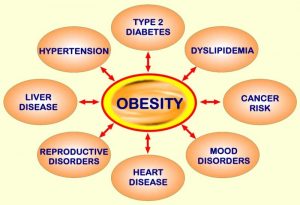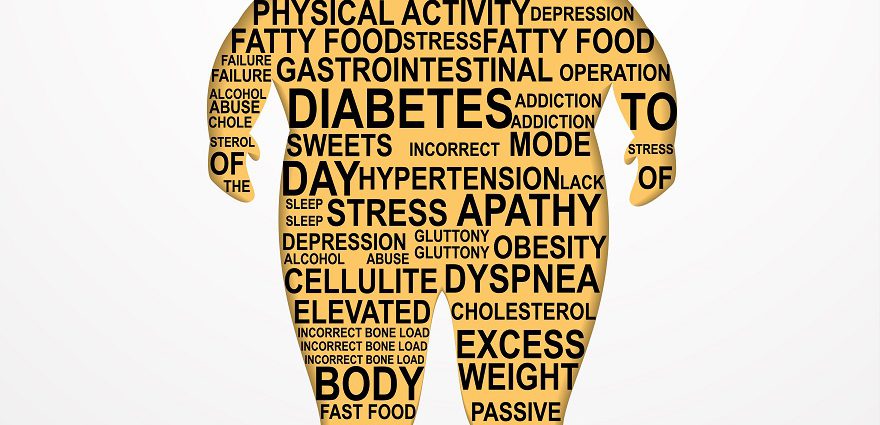Disease of Obesity
“Weight that is higher than what is considered as a healthy weight for a given height is described as overweight or obese.” – CDC
A few metabolic cues that help control food intake and energy expenditure are altered causing an increase risk of obesity. An expression of two neurons AgRP and POMC have altered these two important contributors to a healthy lifestyle. POMC neuron, if inhibited, allows AgRP to accumulate and increase food intake and decrease energy expenditure. The complexity of obesity is still hard to combat and help find the most effective treatment.
Defined by various classes:
Class 1 obesity: BMI 30-34
Class 2 obesity: BMI 35-39
Class 3 obesity: BMI 40 or higher

Correlation to other Diseases
Type 2 diabetes mellitus: Insulin resistance is a positive correlation to visceral fat accumulation that is a risk factor to Type 2 diabetes. According to a research article by Kyrou et al., “(T2DM) comprises up to 90% of all diagnosed diabetic cases in adults and is typically associated with presence of various degrees of obesity.”
Cardiovascular disease: Multiple environmental factors can play a role but hypertension and dyslipidemia (Elevated cholesterol/fats found in the blood. An increased risk of clogged arteries thus then lead to heart attacks, strokes, etc. ) contribute to CVD. The “Metabolic Syndrome,” a cluster of medical conditions, has been shown to have a 2-fold increase of CVD outcomes.
Cancer: Increase adiposity is a risk factor for cancer. Sufficient evidence has been gathered to form a consistent relationship between obesity and cancer of esophagus, gastric cardia, colon and rectum, liver, gallbladder, pancreas, breast, ovary, kidney, thyroid, and many more. 
Other problems such as respiratory and musculoskeletal disorders, sub-fertility, psychosocial problems, and liver dysfunction are linked to obesity.
Discouraging Statistics
Globally: Obesity has tripled since 1975.
11% of men and 15% of women are obese while 39% of men and 40% of women are still overweight.
41 million children under 5 are overweight. 340 million children 4-19 are overweight or obese.
Countries with the highest prevalence of obesity:
Naura – 61% Cook Islands – 55.9% Palau – 55.3%
States with the highest rates of obesity:
West Virginia – 37.7% Mississippi – 37.3% Alabama – 35.7%
The cost of obesity in the United States in cost 147-210 billion dollars annually. It costs individuals with obesity missing days of work, an increase of healthcare cost, and decrease of life span.

